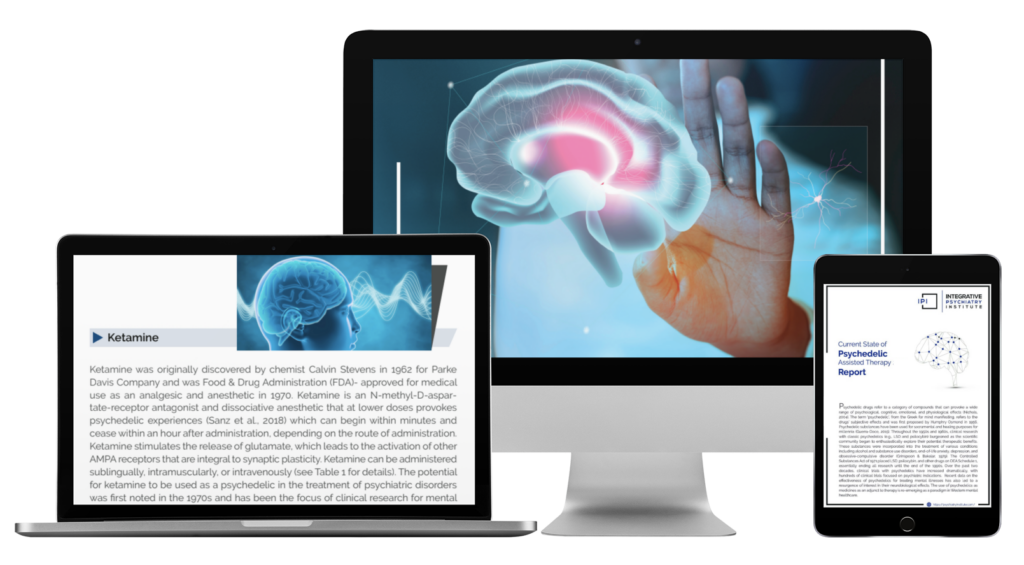
Mental health is an integral component of overall well-being, and the importance of addressing mental health issues cannot be overstated. Mental health disorders such as depression, anxiety, PTSD, and addiction affect millions of people worldwide, significantly impacting their quality of life. The traditional approaches to mental health treatment, including therapy and medication, have been helpful for many individuals.
In this blog post, we will delve deeper into the concept of neuroplasticity and explore how psychedelics may impact this process. We will examine the potential applications of psychedelics in mental health treatment, review current research and clinical trials, discuss the legal and regulatory environment, and address criticisms and concerns surrounding the use of psychedelics.
What is Neuroplasticity?
Neuroplasticity refers to the brain’s remarkable ability to adapt, reorganize, and change its structure and function throughout an individual’s life. It is the brain’s inherent capacity to modify neural pathways and form new connections in response to experiences, learning, environmental factors, and even physical or psychological trauma.
Traditionally, it was believed that the brain’s development and organization were fixed during early childhood and adolescence, and that the adult brain was relatively stable. However, groundbreaking research has shown that neuroplasticity exists throughout life, allowing the brain to constantly reshape itself in response to internal and external stimuli.
Importance of Neuroplasticity to Mental Health
Neuroplasticity plays a vital role in mental health, as it underlies the brain’s ability to adapt and recover from challenges, stress, and mental health disorders. Here are several key ways in which neuroplasticity is significant:
- Learning and Memory: Neuroplasticity is fundamental to the processes of learning and memory formation. It enables the brain to acquire new information, store memories, and retrieve them when needed. When we learn something new, neural connections are formed and strengthened. Conversely, when we don’t use certain neural connections, they may weaken or even disappear.
- Recovery from Injury and Disease: Following traumatic brain injuries, strokes, or neurodegenerative diseases, neuroplasticity allows the brain to rewire and compensate for damaged areas. This adaptive process helps individuals regain lost functions and adapt to new circumstances.
- Resilience and Adaptability: Neuroplasticity enables the brain to respond and adapt to changes in the environment, stressors, and emotional experiences. It allows individuals to develop resilience and cope with challenging situations, promoting mental well-being.
- Shaping of Neural Circuits: In mental health disorders, such as depression, anxiety, and addiction, neuroplasticity can be both beneficial and detrimental. It plays a role in the development and persistence of these disorders but can also be harnessed for therapeutic interventions to reshape maladaptive neural circuits.
Psychedelics: An Overview
Psychedelics, also known as hallucinogens or entheogens, are a class of psychoactive substances that produce profound alterations in perception, cognition, and emotions. These substances have been used for centuries in various cultures for spiritual, shamanic, and healing purposes. Examples of psychedelics include psilocybin (found in magic mushrooms), LSD (lysergic acid diethylamide), DMT (dimethyltryptamine), mescaline (found in peyote cactus), and ayahuasca.
Throughout history, psychedelics have played a significant role in religious and ceremonial practices. Indigenous cultures from the Amazon rainforest to the Native American tribes have utilized these substances as tools for spiritual exploration and gaining insights into the nature of existence. The use of psychedelics has also been associated with artistic and cultural movements, such as the counterculture of the 1960s.
Different Types of Psychedelics and Their Effects on the Brain
Psychedelics exert their effects by interacting with serotonin receptors in the brain, particularly the 5-HT2A receptor. This interaction leads to changes in neural activity, neurotransmitter release, and communication between brain regions. These alterations result in the characteristic effects of psychedelics, including sensory distortions, visual hallucinations, enhanced introspection, altered sense of self, and heightened emotional experiences.
Different psychedelics have varying potencies, durations, and subjective effects. For example, psilocybin mushrooms can induce feelings of euphoria, introspection, and mystical experiences. LSD is known for its long-lasting effects, intense visual hallucinations, and potential for profound spiritual experiences. DMT, often consumed through ayahuasca, can lead to otherworldly visions, ego dissolution, and encounters with mystical entities. Mescaline, derived from the peyote cactus, produces altered perceptions of time, enhanced empathy, and spiritual insights.
Current Legal Status and Regulations Surrounding Psychedelics
The legal status of psychedelics varies across countries and jurisdictions. In many places, psychedelics are classified as Schedule I substances, indicating they are considered to have a high potential for abuse and no accepted medical use. However, there is a growing shift in attitudes and policies towards psychedelics, driven by emerging scientific evidence of their therapeutic potential.
In recent years, several countries and regions have started to explore alternative approaches to psychedelics. For example, in the United States, the Food and Drug Administration (FDA) has granted breakthrough therapy designation to psilocybin-assisted therapy for treatment-resistant depression. Other countries, including Canada and the Netherlands, have allowed the use of psychedelics in clinical research settings or decriminalized possession and use in specific contexts.
What Connects Psychedelics to Neuroplasticity?

Psychedelics have been found to have a profound impact on neuroplasticity, the brain’s ability to reorganize and form new connections between neurons. Several studies have explored the connection between psychedelics and neuroplasticity, shedding light on the mechanisms through which these substances promote brain adaptability and change.
Evidence suggests that psychedelics such as LSD, DMT, and DOI can increase the complexity of dendritic arbor, stimulate dendritic spine growth, and promote structural and functional neural plasticity (Frontiers in Psychiatry). In particular, LSD has shown to be highly potent in promoting neuritogenesis compared to other tested psychedelics (NCBI). These findings indicate that psychedelics have the potential to enhance the growth and connectivity of neurons in the brain.
How Psychedelics Impact Neuroplasticity
Research studies have shown that psychedelics have the potential to promote neuroplasticity in the brain. Neuroplasticity refers to the brain’s ability to reorganize and form new connections between neurons, allowing for learning, memory formation, and adaptation.
Psychedelics interact with the serotonin system in the brain, particularly the 5-HT2A receptor. This interaction triggers a cascade of effects that lead to changes in neuronal activity and communication. These changes can result in alterations in structural and functional connectivity within the brain, promoting neuroplasticity.
Potential Mechanisms Through Which Psychedelics Promote Neuroplasticity
The exact mechanisms through which psychedelics promote neuroplasticity are still being explored. However, researchers have proposed several potential mechanisms:
- Modulation of Excitatory Neurotransmission: Psychedelics have been found to modulate the activity of excitatory neurotransmitters, such as glutamate. This modulation may facilitate synaptic plasticity and the formation of new connections between neurons.
- Activation of Growth Factors: Psychedelics may stimulate the release of growth factors, such as brain-derived neurotrophic factor (BDNF). These growth factors play a crucial role in neuronal survival, growth, and connectivity, contributing to neuroplasticity.
- Disruption of Default Mode Network: The default mode network (DMN) is a brain network associated with self-referential thinking and mind-wandering. Psychedelics have been shown to temporarily disrupt the functioning of the DMN, leading to a more fluid and flexible state of consciousness. This disruption may create an opportunity for the brain to reorganize and form new neural connections.
- Increased Excitability and Synchronization: Psychedelics can increase neuronal excitability and promote synchronous firing of neurons. This heightened excitability and synchronization may facilitate the strengthening and remodeling of neural connections.
What’s the Issue?
Psychedelics and neuroplasticity have been the subject of scientific research, with studies exploring their effects on the brain’s ability to change and adapt. While psychedelics have shown potential therapeutic benefits, there are also some concerns and issues associated with their impact on neuroplasticity.
According to a systematic review published in Frontiers in Psychiatry, LSD was found to be the most potent psychedelic in promoting neuritogenesis compared to other tested psychedelics. Neuritogenesis refers to the growth and development of nerve cells, indicating that psychedelic substances may have the ability to enhance neuroplasticity in certain contexts (Frontiers in Psychiatry).
Potential Risks and Side Effects Associated with Psychedelics
While psychedelics have shown promise in therapeutic contexts, it is important to acknowledge and address the potential risks and side effects associated with their use. Some common concerns include:
- Psychological Distress: Psychedelics can induce intense and unpredictable psychological experiences, which may lead to feelings of anxiety, fear, or confusion. These experiences can be particularly challenging for individuals with a history of mental health disorders or those who are not prepared for the intensity of the psychedelic experience.
- Bad Trips: A “bad trip” refers to a negative and distressing psychedelic experience. Bad trips can occur due to various factors, such as an individual’s mindset, setting, or dosage. They may result in acute psychological distress, panic reactions, or even trauma.
- Risky Behavior: While under the influence of psychedelics, individuals may engage in risky behaviors due to altered perception and judgment. This can potentially lead to accidents, self-harm, or other dangerous situations.
- Pre-existing Mental Health Conditions: Psychedelics can exacerbate symptoms in individuals with pre-existing mental health conditions such as schizophrenia, bipolar disorder, or certain personality disorders. Individuals with these conditions should approach psychedelic use with caution and under professional guidance.
Final Thoughts
The potential of psychedelics and neuroplasticity offers hope for a new era in mental health treatment. Conventional approaches have limitations, and the need for innovative and transformative treatments is increasingly recognized. Psychedelics, through their impact on neuroplasticity, have the potential to provide breakthroughs in the understanding and management of mental health conditions.
In conclusion, the potential of psychedelics and neuroplasticity in mental health treatment is an exciting frontier that requires further research, exploration, and responsible integration. With continued efforts and collaboration, there is hope for a future where these substances can be used as powerful tools in transforming mental health care and helping individuals find healing, resilience, and improved quality of life.







